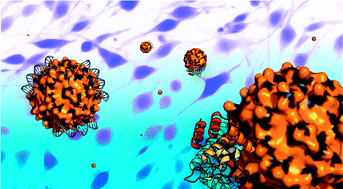There are many diagnostic and therapeutic applications within medicine where nanoparticles can find use, as Chem Soc Rev’s forthcoming Nanomedicine issue demonstrates. Nanoparticles made from a diverse range of materials such as gold, iron, silica and polymers bring specific benefits to the medical field. However, these nanoparticles need to be designed so that they can be delivered to and interact with the target biosystem. This is achievable by changing the nanoparticle surface coating as Vincent Rotello and co-workers illustrate in their Highlight review.

Those researchers who modify the surface functionality of nanoparticles can be considered as master tailors who must make sure that the coat they prepare is appropriate for the occasion. This means ensuring it is stable in biological media; is non-cytotoxic; and specific for particular cells or tissues. For those starting out in this field, Rotello’s Highlight review article provides a general overview of the materials/fabrics available for preparing nanoparticle coats. When you discover a surface coat that improves the efficiency of your nanoparticles to treat a disease, you can’t help but say “Suits you sir!”
Read ‘Surface functionalization of nanoparticles for nanomedicine’ >
The Nanomedicine themed issue will be online soon. Sign up to the Chem Soc Rev e-alert to be notified when it is available.
Posted on behalf of Iain Larmour, Chem Soc Rev web science writer.










